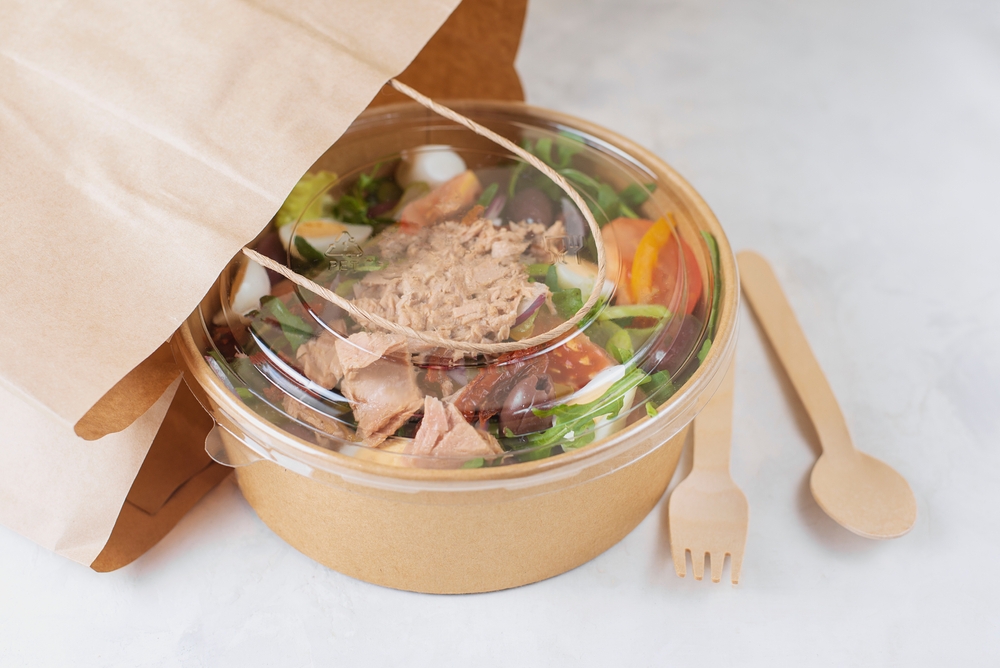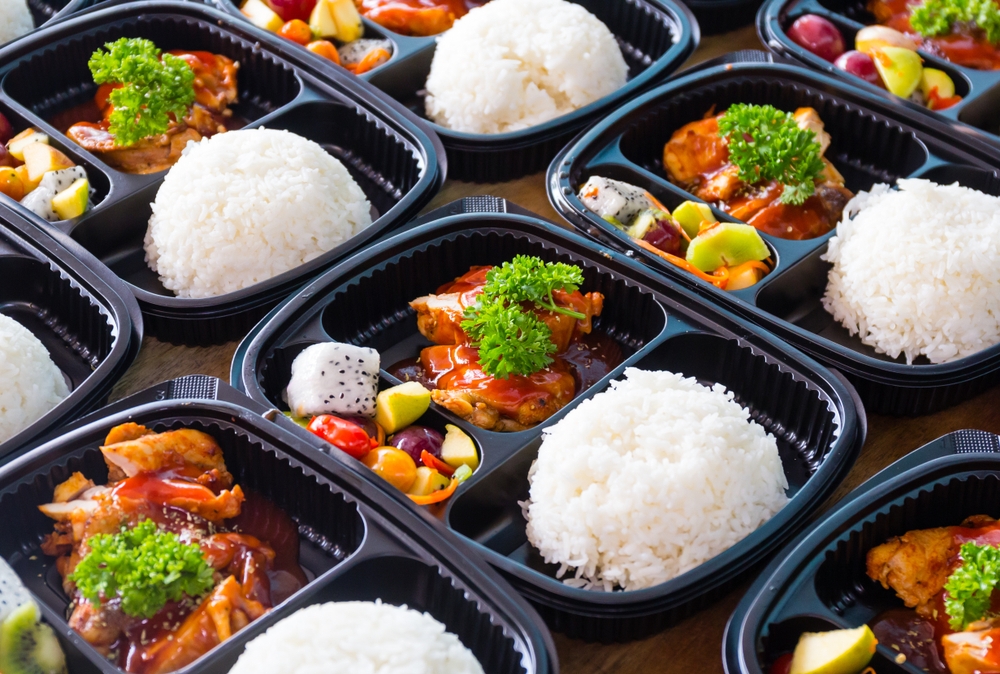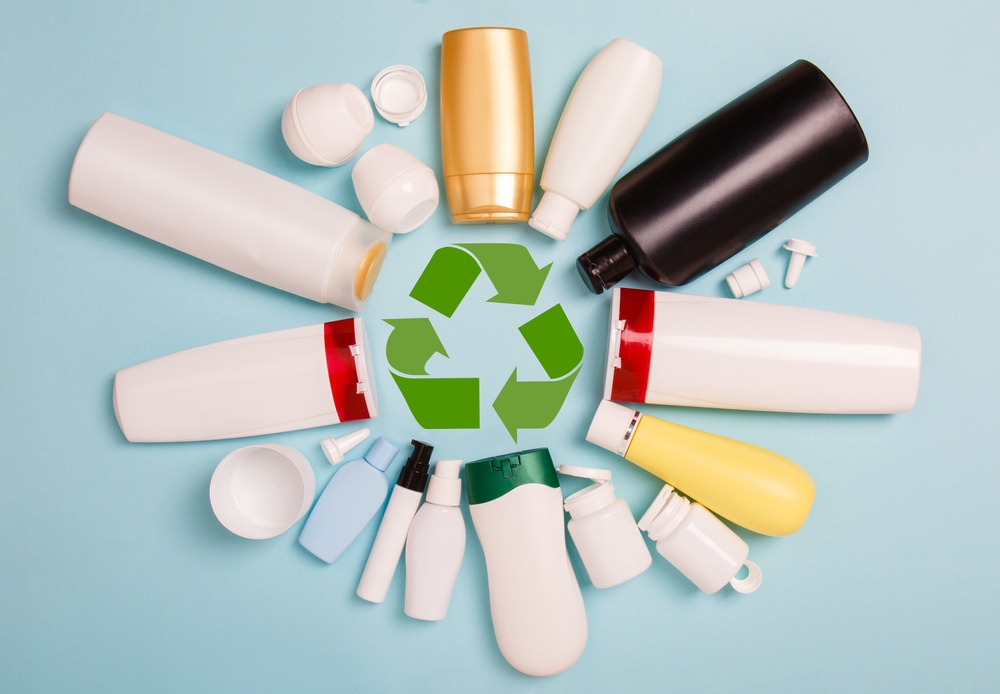Sustainable Takeout: Can Takeaway Boxes Be Recycled Effectively?
By Anttoni Taimela · 3. April 2024
Can takeaway boxes be recycled?
The short answer is, it’s complicated. But don’t worry, we’re here to clear the air.
This guide walks you through the various materials used in takeaway boxes🥡, what can and can’t go in the recycle bin, and steps to recycle properly.
Read on for straightforward answers and practical tips.
Understanding Takeaway Container Recycling

Recyclable Takeaway Container
Ever scratched your head over the myriad of materials used in takeaway containers at restaurants, including paper bags?
From biodegradable bagasse to sturdy polypropylene, the recycling potential of these containers depends on their material type and any coatings or additives they might have.
Recycling facilities have developed sophisticated methods to handle this variety of materials.
In many areas, your takeaway containers can find their way to new life through curbside recycling programs or at specific out-of-home recycling points.
However, prior to confidently tossing those containers into the recycling bin, there’s an essential step — rinsing — that should not be overlooked.
A quick rinse can go a long way in ensuring your containers get recycled effectively. This applies to both the container and its lid.
But what if recycling isn’t an option for your containers?
Don’t fret! They can still be reused or disposed of responsibly in your local council’s kerbside residual bin.
So, the next time you savour your favourite takeout, remember that the journey of your takeaway plates and containers doesn’t have to end with your meal.
A quick rinse followed by proper disposal can significantly contribute to their recycling journey.
Alternatives to Traditional Plastic Containers

Alternative Takeaway plastic Container
While plastic containers, including plastic bags, have been a popular choice for food takeaway, especially for cold food and hot foods, due to their convenience and durability, the rising tide of environmental concerns has spurred the development of eco-friendly alternatives to plastic food containers.
Here are some notable eco-friendly bag alternatives worth considering.
First up, PLA bioplastic. This eco-friendly superhero is derived from renewable plant sources and boasts the following benefits:
- Lower greenhouse gas emissions than traditional plastics
- Biodegradable
- Recyclable
- Often carries the recycling symbol
Next in line, unbleached Kraft board boxes and cardboard or paper sleeves.
These sustainable superstars are crafted from renewable wood pulp and are fully recyclable and biodegradable, unlike traditional plastics or plastic film.
Plus, they can be composted, giving them a much greener lifecycle than traditional plastic containers.
So, when considering eco-friendly packaging options, don’t forget about the benefits of the box and paper sleeves.
Another cool alternative is bagasse. Bagasse is used to make trendy, eco-friendly takeaway containers, offering a convenient and sustainable alternative to regular plastics.
Through these green alternatives, we can see that not all containers are created equal.
A conscious choice to opt for eco-friendly alternatives enables us to reduce waste and foster sustainability.
The Impact of Contaminants on Recycling
Recycling isn’t just about sorting your waste into the right bins🗑️. There’s a little more to it, and it all comes down to cleanliness.
Did you know that oil and grease from your takeaway can contaminate the recycling process?
When oil and grease mingle with your recyclables, they can alter the plastic’s properties, leading to a whole batch being rejected.
This not only wastes resources but also drives up the cost of recycling.
Contaminants can also introduce mystery chemicals into the recycling process, raising serious concerns about toxic build-up.
This can lower the value of recycled plastics and spike recycling costs.
These pesky contaminants not only serve to make recycling more complex and expensive but also pose potential health risks to workers handling hazardous waste.
So, the next time you’re about to recycle your takeaway containers🥡, remember to give them a good rinse.
Reducing contamination by product itself not only improves the recycling process but also decreases costs, leading to a smaller carbon footprint.
The Role of Packaging in the Circular Economy

takeaway plastic recycling
Sustainable packaging plays a crucial role in the circular economy, reducing waste and promoting reuse.
The magic of sustainable packaging doesn’t stop there. It can:
- Lead to a significant reduction in waste generation by promoting the use of reusable packaging
- Turn biowaste and compostable materials into high-quality compost, contributing to soil health
- Be made from renewable materials and help reduce greenhouse gas emissions
As we strive for a more sustainable future, every choice we make counts.
Choosing sustainable food packaging aids the circular economy and sets the course for a greener planet.
Local Recycling Guidelines and Resources
Understanding the basics of recycling takeaway containers is important, but adhering to local recycling guidelines is equally vital.
But how can we navigate the complex world of recycling?
The answer lies in helpful resources like Recycle Now and WRAP.
WRAP offers a wealth range of resources, providing comprehensive guidelines and tools to help both individuals and retailers recycle effectively.
From explaining the recyclability of different materials to handling contaminants and presenting materials for collection, WRAP makes recycling a breeze.
Don’t forget about your local curbside recycling program!
These programs can assist with the recycling of other recyclables such as:
- plastic takeaway containers
- plastic pots
- plastic tubs
- plastic trays
Summary
In conclusion, recycling takeaway containers plays a crucial role in our journey towards a more sustainable future.
From understanding the recycling process♻️ to choosing suitable eco-friendly alternatives and following local recycling guidelines, every step counts.
Let’s all strive to make our takeout habit a bit greener and our planet a bit cleaner!
Frequently Asked Questions
Can takeaway containers go in the recycling bin?
Nope, takeaway containers cannot be recycled in your regular bin. Instead, you can toss or dispose of them into your regular waste bin. So, unfortunately, no recycling ninja move here.
Can you recycle takeaway pizza boxes UK?
Absolutely, go ahead and recycle those pizza boxes in the UK! Just make sure they’re clean and dry to store to avoid any contamination. Happy recycling!
Are polystyrene takeaway boxes recyclable?
Sorry, polystyrene takeaway boxes are not typically recyclable, so they should be disposed of in the general waste. Though some specialized facilities can recycle them if they’re uncontaminated, these are rare to come by.
How do oil and grease affect the recycling process?
Don’t let oil and grease sneak into your recycling bin – they can mess with plastic properties and cause the entire batch to be rejected for recycling. Keep it clean!
What are some eco-friendly alternatives to traditional plastic takeaway containers?
Ditch the traditional plastic and opt for eco-friendly alternatives like PLA bioplastic, unbleached Kraft board boxes, and bagasse containers. Make the switch for a greener planet!

